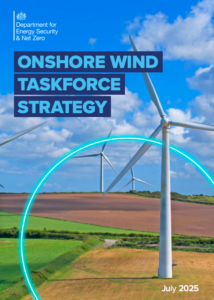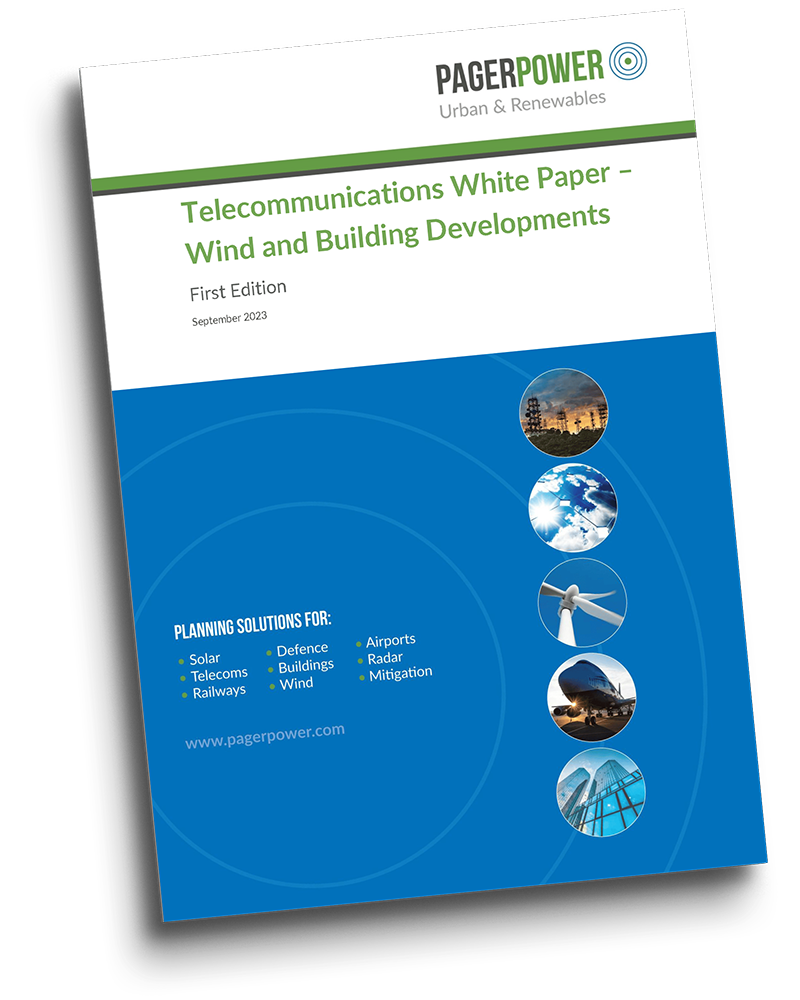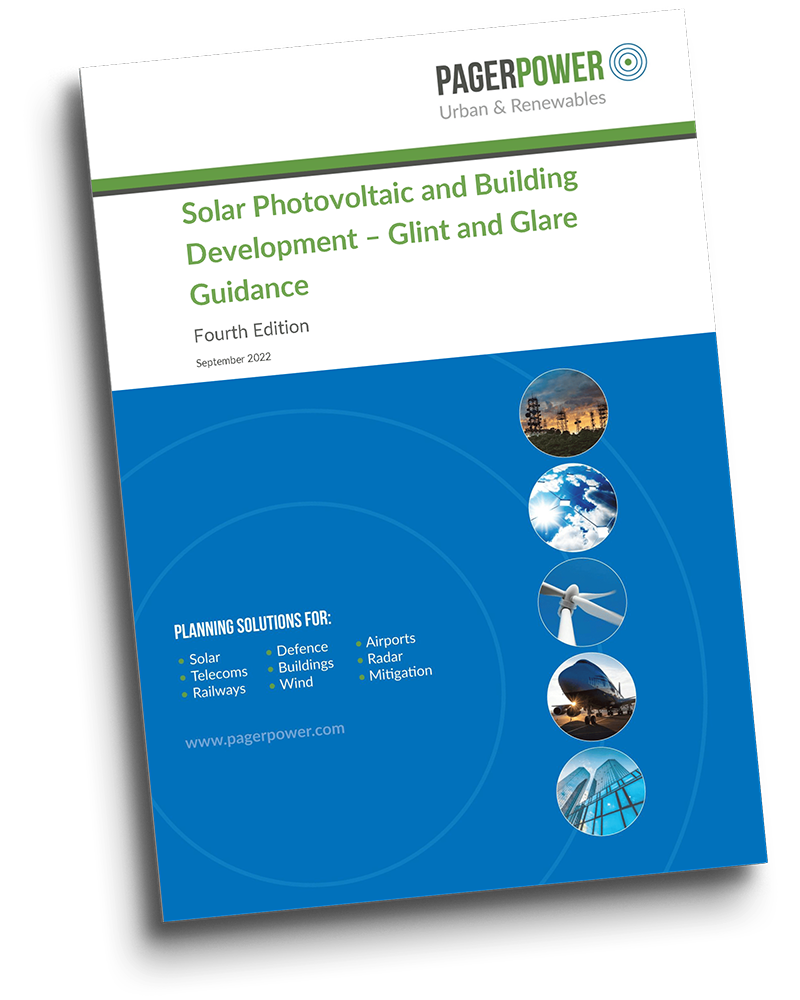OWTS, Part 2: Military and Eskdalemuir

Read part 1 in this series which looks at how the Onshore Wind Taskforce Strategy (OWTS) seeks to help resolve the issues surrounding transparency within aviation mitigation and the constraints around civil aviation radar.
From 2015 to 2024, onshore wind development across England essentially ceased due to a de facto ban on all new onshore wind projects that did not have the approval of local stakeholders; however as of last year, this ban was lifted by the incumbent Government. With the ban stretching back almost a decade, stagnation developed in the aviation and radar sectors across England with respect to wind farm radar mitigation because there was no need to solve long-standing issues that have always plagued wind development i.e. impacts to communications, navigation and surveillance (CNS) infrastructure and the safety of aviation operations. Whilst strictly not in England, mitigating the impacts upon the seismic array in southern Scotland (known as Eskdalemuir), was also put on the back burner. However with the focus now on moving towards Net Zero, and with big targets set for 2030, a renewed focus has been placed on England’s onshore wind sector, including Eskdalemuir, and therefore the UK Government has released the Onshore Wind Taskforce Strategy (OWTS) to help move the process forward.

The strategy covers numerous areas of onshore wind development, from enhancing planning efficiency to tackling public perception; however Pager Power’s focus is on the aviation and radar sectors. Part 2 in this series looks at how the strategy seeks to help resolve the UK’s Ministry of Defence (MOD) ongoing radar problems and the constraints around developing near Eskdalemuir, an area that has been neglected for a number of years. Lastly, as experts in this area, we will discuss how effective the strategy is likely to be, what it does well, and where it could go further.
OWTS Overview
The OWTS is an 82-page document written by the Department for Energy Security and Net Zero, and was released on 4th July 2025. The authors specifically state:
The Onshore Wind Taskforce Strategy sets out over 40 actions, primarily government commitments, to resolve the key blockers to onshore wind in the UK. It aims to:
- boost onshore wind deployment
- deliver economic benefits for local communities, businesses and the consumer
The strategy is the main output from the Onshore Wind Taskforce, established in July 2024 in order to produce this strategy, now disbanded.
The OWTS covers the following themes:
- Theme 1 – Site Selection, preparation and consenting
- Theme 2 – Networks and system planning
- Theme 3 – Communities and public perception
- Theme 4 – Aviation and defence
- Theme 5 – Finance and routes to market
- Theme 6 – Supply chain, skills and workforce
Of these, aviation and defence cover seven pages within Theme 4.
Military Air Traffic Control Radar Summary
The impact of wind turbines on radar has been known for well over two decades, and this article will assume implicit knowledge of the reader regarding these impacts; however, for those requiring further information, please see the article here.
The key issues surrounding military radar issues are summarised well within the four bullet points below:
- There is limited visibility over which projects are likely to be objected to, and on what grounds;
- It is not clear how the impacts of onshore wind projects on ANSP (Air Navigation Service Provider) services are calculated;
- It is not clear why some mitigations are requested over others; and
- It is felt that the costs of mitigation solutions are disproportionate.
On this basis, the OWTS has suggested the following actions:
- Action 22: the Government will commission an annual survey of onshore wind impacts on aviation and defence infrastructure.
- Action 23: the Government will develop best practice guidance on use of non-disclosure agreements (NDAs) when resolving aviation objections.
- Action 24: the Government will co-ordinate a developer-funded programme of trials to test a range of potential solutions to onshore wind turbine interference with MOD air traffic control radars.
- Action 25: the Government will introduce a developer-funded, full-time post in the MOD with responsibility for leading on strategic solutions to onshore wind turbine interference with air traffic control radar.
Eskdalemuir Summary
Due to the size and nature of wind turbines, as they rotate, they create minuscule ground vibrations that can be picked up by the Eskdalemuir seismic array and either affect its ability to detect ground vibrations from nuclear testing around the world or indeed mistake them for nuclear weapons testing. Due to this, a 10km exclusion zone was placed around the centre of the array, with a consultation zone extending to 50km.
A ‘vibration budget’ has also been developed to ensure that no wind developments within the 50km area exceed the threshold that is calculated to affect the array. A key issue exists however, that means developments closer to the array could use up more of the budget that would otherwise facilitate much more wind development further away from the array due to the vibration effects diminishing with distance. This means permitting development is an incredibly complex task, with it being paramount that permitting one development would not disproportionately affect opportunities for future wind development. Indeed, in recent years, the 50km zone has essentially been treated as an exclusion zone (see below), and it has severely limited the deployment of the onshore wind around Eskdalemuir, with the OWTS stating the following key facts:
- In 2018 a proposed onshore wind project breached the threshold, and MOD has objected to all proposed wind farm developments within the 50km ‘consultation zone’ since.
- There is currently a known pipeline of 77 onshore wind projects at a total cumulative capacity of 3.4GW that are within the 50km consultation zone and are therefore unable to progress until this is resolved.
- It is estimated that a further 3GW of onshore wind could be unlocked within the 50km consultation zone (if the budget issue can be resolved).
On this basis, the OWTS has suggested the following actions:
- Action 30: We will work with MOD and Scottish Government to implement an enduring solution to both unlock onshore wind capacity around Eskdalemuir seismic array and uphold necessary safeguarding
- Action 31: We will work with MOD and Scottish Government to identify and implement an appropriate route to enforce the updated approach to Eskdalemuir seismic array
More information on Eskdalemuir can be found here.
OWTS Critique
Military and Air Traffic Control Radar
MOD radar issues have been one of, if not the most, significant barriers to wind development in the UK in terms of aviation impacts for a long time. Historically, the MOD has been reticent to approve any type of mitigation for their radar, even though proven solutions exist. It simply hasn’t been a priority of the MOD to consider this, which makes sense when you consider that dealing with radar mitigation solutions for wind turbines is not a core departmental responsibility.
Consultation with the MOD has also always proved difficult, with there generally being little place for dialogue between the developer and the MOD. Historically, when the MOD say no, the answer is no, with no room for consultation, and little in the way of direct conversation or negotiation. An example of this that Pager Power worked on was proposed single turbine project that was located in northern Scotland that had an impact on an Air Defence (AD) radar. It was stated that the impact would be too big (it was a single turbine amongst many others wind developments, and was further onshore relative to the radar), there was no budget for mitigation, and even if there was, there was no guarantee the MOD would approve it. This is essentially where the project ended, and whilst all other planning concerns had been resolved, including a second radar impact issue that required mitigation, the MOD objection ended the project. These types of projects are important to the industry, businesses and rural populations, and should be emphasised.
Finally, there is only one mention of AD radar within the document and it appears to downplay the significance of a sustained AD radar objection, as the example above suggests. These radar have coverage over the whole eastern coast of England and up through Scotland, and are considered extremely sensitive with respect to the safeguarding for national security reasons. AD has long been a major reason for objections and refusal for wind developments however, the OWTS does not acknowledge this. Air traffic control radar are typically safeguarded to a much lesser range than AD radar, and in Pager Power’s experience, AD objections are much more common. This is something that needs to be explored further.
Eskdalemuir
Fixing the Eskdalemuir issue is more than just a technical challenge, it also has complications tied to planning and politics, given the restriction on the noise budget. The 50km consultation area currently sits as a sterile area for wind turbine development, covering over 750,000km2. Given the general rurality of this area, a first-principles approach would suggest that this area would be well suited to more wind development.
So what needs to be done? Action 30 is a great step in the right direction however in the absence of any technological solutions, be it changes to the array itself or damping of the wind turbines, the noise budget is still likely to be a limiting factor. Therefore, a greater understanding of the noise budget is required alongside a uniform, consistent and fair approach to wind development in this area to ensure one project does not disproportionately affect the budget and sterilise wider development areas. Could this be an area in which Great British Energy, the state-owned energy company, can play a part in ensuring a consistent approach that works for the wind industry and the MOD?
Final Thoughts
The OWTS clearly sets out the goals for the future of onshore wind across England and acknowledges that the key issues that faced onshore wind development in England in 2015, still exist in 2025. Some of the actions do seem to lack specificity in terms of the outcomes they seek, and whilst they recommended transparency and further discussion, there is no guarantee that aviation stakeholders will fully commit to the work needed to achieve the outcomes required. That is of course, without further government intervention, which cannot be ruled out (see Eric Pickles, circa 2015).
The strategy also needs to cater to developments of all sizes and scales. There will obviously be projects where mitigation simply isn’t feasible – an open season for wind turbine development is not what the industry expects at this point, but what needs to be ensured is that the solution and strategy cater to those wanting to develop single turbine projects, all the way up to NSIP-scale wind developments. The strategy however, doesn’t go into this level of detail, but clarity here would comfort developers who specialise in smaller-scale projects and who represent a very important part of the industry.
In terms of aviation and radar specifically, the issues have been well known for over two decades and a lot of this sentiment has been said before and has been discussed over the author’s 13 years in the industry and Pager Power’s 20+ years as an organisation working in this area. However the noise coming out of the government and industry bodies suggests that there has never been a greater emphasis and more determined push for overcoming this issue, especially with this government’s ambitions for Net Zero. Time will tell whether the OWTS will set the tone in the country’s bid to regenerate England’s onshore wind industry, however with the general mood across the wind sector being that of positivity, it is a good place to start.
Speak to an Expert
If you are interested in finding out more about our expertise in wind planning support and how we can help you understand the aviation and radar issues that your project faces, click here.
To make an enquiry, give us a call on +44 (0)1787 319001, email our team directly or send an email to info@pagerpower.com .
About Pager Power
Pager Power is a dedicated technical consultancy that has been providing independent guidance and advice regarding wind, solar and building developments in the UK and internationally since 2002.
Further details about the services we provide can be found here. Pager Power has completed over 1,600 glint and glare assessments, over 1,000 aviation/radar impact assessments, over 500 television and radio reception surveys, and over 500 telecommunications impact assessments.
Finally, a link to our testimonials page can be found here.https://www.pagerpower.com/wp-content/uploads/2025/07/OWTS-2-thumbnail.png







